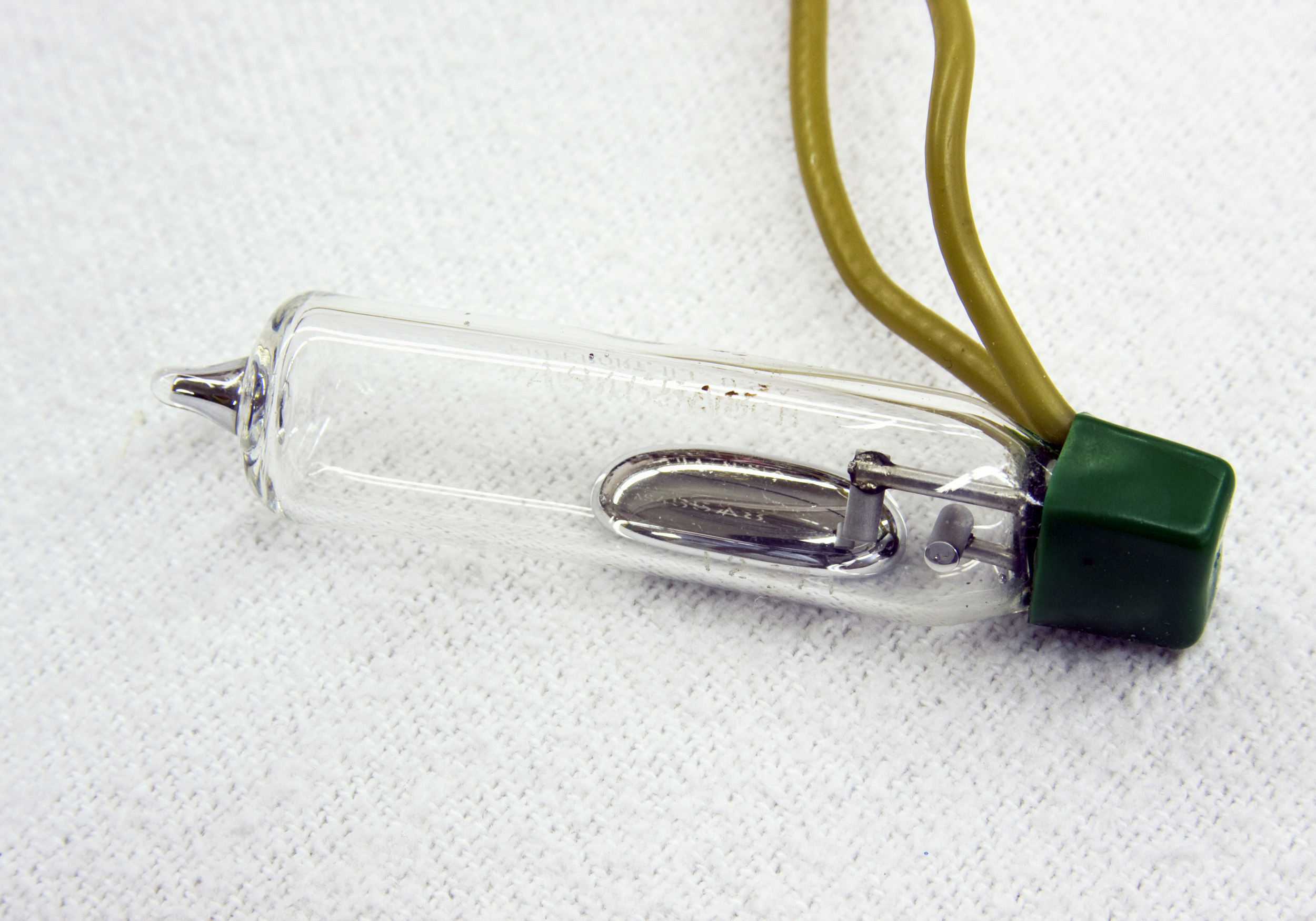The advent of electronic controllers in espresso machines from the 1980s onwards paved the way for much more precise and complex control of espresso machines. The majority of machines today still use fairly simple controls, and they appear superficially similar to machines designed in the 1980s. The electronics controlling them, however, have become increasingly sophisticated, allowing fine control over parameters such as temperature, pressure, and flow that previously relied on mechanical controllers.
 A mercury switch. Before the development of electronic controllers, electromechanical devices like this were used to control machine functions. In this case, the switch is activated when it is tilted, causing the mercury to touch both contacts and complete the circuit.
A mercury switch. Before the development of electronic controllers, electromechanical devices like this were used to control machine functions. In this case, the switch is activated when it is tilted, causing the mercury to touch both contacts and complete the circuit.
Modern microprocessors can even allow a machine manufacturer to entirely do without parts of a machine that were previously considered essential — such as a boiler, or the large كتلة حرارية of brass in a group head. This allows for machines to be built that look and function very differently to traditional espresso machines.
The control unit of any electronically controlled espresso machine is built around a small onboard computer — a microcontroller or microprocessor that collects the information from the various inputs such as temperature, pressure, water fill level, as well as keeping track of what button was pressed and when. The control unit then issues instructions to the mechanical parts of the machine accordingly (e.g. operating the pump, solenoid valves, or heating elements).
The control unit can allow for more complex control of the espresso machine — for example, by varying the pressure delivered to the group. A 1988 patent describes the use of a microprocessor to control the brew valves and pump of an espresso machine separately, to allow programmable low-pressure preinfusion (Rorato 1988).
Depending on the chip, the control software may be permanently built into the hardware, or it may be possible for baristas to use special procedures to update or reprogram it. Software that is closely linked to the hardware and cannot readily be reprogrammed is known as firmware.